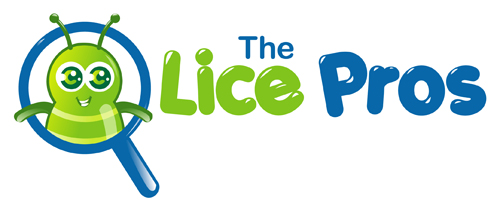- November 20, 2019
Lice in Teenagers
Lice in teenagers is fairly common, although many parents assume that once those elementary school days are behind them, it is no longer a worry. Parents in Frankfort, IL or in nearby cities who have a teenager suffering from those embarrassing bugs know it isn’t a pleasant time! Above all other age groups, teens do not want to become the victim and have their friends know about it. We provide head lice treatment that you can count on to get the job done now, without messy applications of products that contain harsh chemicals and ingredients. Lice removal is critical as soon as you realize there is a problem; after all, you don’t want an infestation taking over your entire family. Our head lice clinic provides a welcoming, friendly environment along with technicians who understand how teenagers feel. Our top priority is getting rid of those critters for good, so your [...] - August 27, 2016
Proper Lice Treatment in Chicago: Dispelling Myths on Creepy Crawlies
The memory of some of the horrible winters we’ve had in Chicago locals’ mind, and there’s no doubt they are bracing for another brutal cold winter. Unfortunately, below-zero temperatures are not the only worries for them this year. The Patch.com staff says that locals should also be prepared from an invasion of creepy crawlies this winter: With winter being a particularly active time for outbreaks, thanks primarily to extra clothing like hats and coats providing a convenient way for bugs to spread, we bring you some tips to help you survive an outbreak without losing your mind. Lice ( Pediculus capitis), tiny insects about the size of a sesame seed, are hardy creatures. Lice need warm hosts to feed and reproduce. Lice are parasitic bugs that live only off of the blood of humans and not on dogs or cats. The key to winning the battle over these parasitic insects is [...] - August 18, 2016
Facts on Lice Removal in Chicago—From Detection to Effective Treatment
Is your child scratching his head because he’s confused about something—or is he suffering from a lice infestation that you’ll have to deal with immediately? Itching is the most tell-tale sign that lice have taken over your little one’s noggin, but itchiness may not be felt right away as there could be no symptoms for up to 6 weeks after they get lice. Finding the Creepy Crawlers Before calling on reliable providers of Chicago lice treatment services, such as those from TheLicePros.com, first verify that your child does indeed have lice. Start by identifying the presence of other symptoms, including a tickling or feeling that something is moving on the head, sores or redness on the scalp due to frequent scratching, difficulty sleeping, irritability, and red bumps on the head and neck area. Of course, nothing beats a visual inspection where you’ll have to use a fine-toothed comb to part your [...] - July 16, 2016
Know Your Enemy: The Lifecycle of a Head Lice
A common problem for kids, head lice are wingless insects that feed on minute amounts of blood taken from the scalp. They live among human hair and can multiply in an alarming rate. Although lice are not dangerous, their bites can irritate the scalp and cause annoying itchiness. Lice removal can be frustrating as they are highly contagious and can have various hiding places within the home. Don’t wait for lice to pass from one person to another; the earlier you deal with a lice problem, the better your chances are of getting rid of these parasites swiftly and effectively. Egg or Nits. Lice eggs or nits are can be seen as tiny dots, usually colored brown, tan, or yellow. They are usually found close to the scalp and cannot be removed by brushing. Once the nits hatch, the shell turns white and remains attached to the hair strand. Nymphs. [...] - April 13, 2013
Head Lice Life Cycle | Biology
1. WHAT ARE HEAD LICE? The head louse, or Pediculus humanus capitis, is a parasitic insect that can be found on the head and, more rarely, the eyebrows and eyelashes of people. Head lice feed on human blood several times a day and live close to the scalp to maintain their body temperature. 2. WHAT DO HEAD LICE LOOK LIKE? Head lice have a life cycle with three stages: EGG/Nits: These are lice eggs laid by the adult female louse at the base of the hair shaft near the scalp. The eggs are firmly attached to the hair shaft and are oval-shaped and very small and hard to see. Eggs vary in color from clear to light brown to yellowish-white. They are often confused with dandruff, scabs, or hair spray droplets. Eggs are usually located no more than 1/4 inch (0.635cm) from the base of the hair shaft. Nymphs: A nymph [...] - May 01, 2012
Head Lice Symptoms, Diagnosis, and Pictures
Because head lice and lice eggs are very small and hard to see, a louse infestation is often difficult to detect and diagnose – even for many health care professionals. See Head Lice Pictures At the time of detection, an average infestation often includes only 10-15 hatched lice and 20-30 eggs. Head Lice Symptoms and Signs of Infestation: Tickling feeling of something moving in the hair. Excessive itching, usually caused by an allergic reaction to the bites of the head louse. Irritability and difficulty sleeping; head lice are most active in the dark Sores on the head caused by scratching. These sores can sometimes become infected with bacteria found on a person’s skin. Detection and Diagnosis: Head lice and eggs are found almost exclusively on human head hair and the scalp, frequently around and behind the ears and near the neckline at the back of the head. See head lice symptoms above. Head [...]

Call now to schedule an appointment
Calls are answered 24/71-855-LICEPRO
Evening and Weekend
Appointments Available!




- Home
- Process
- Products
- Services
- Blog
- Lice Facts
- -- Head Lice Life Cycle | Biology
- -- Proper Lice Treatment in Chicago: Dispelling Myths on Creepy Crawlies
- -- Head Lice Symptoms, Diagnosis, and Pictures
- -- Know Your Enemy: The Lifecycle of a Head Lice
- -- Facts on Lice Removal in Chicago—From Detection to Effective Treatment
- Contact Us
- -- Frankfort
- -- Crown Point
- -- Dyer
- -- Joliet
- -- Lockport
- -- Oak Lawn
- -- Orland Park
- -- Palos Heights
- -- Tinley Park
